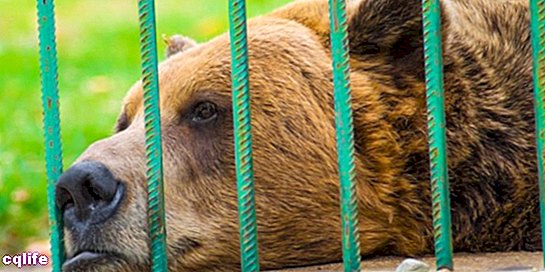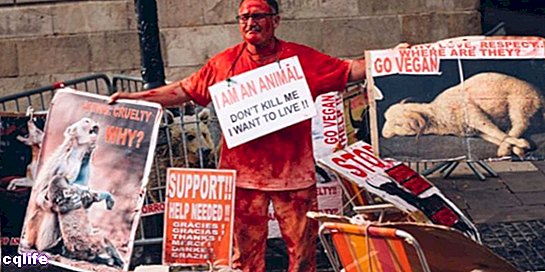- What are animal rights?
- History of animal rights
- Why do animals have rights?
- Animal liberation movement
We explain what animal rights are, their origin and objectives. Also, what is the animal liberation movement?

What are animal rights?
By animal rights or animal rights we mean the different currents of thought according to which animals must be protected by the law from cruel treatment, and must not be considered objects of consumption. In other words, non-human animals are subjects of right regardless of your species.
Throughout your history, humanity has reserved the legal status of subject of law for persons natural and legal persons only, although on occasions it has been denied to certain groups humans, such as slaves, women, etc.
And just as each of these cases of discrimination It has had its corresponding historical struggle, the animals have theirs, which is the Animal Liberation Movement with all its aspects.
The idea of animal rights is to correct the tendency to affectively consider animals depending on their usefulness for the human being, their degree of domestication (such as pets, for example, dogs and cats), or their beauty.
Those who are not socially valued for these and other reasons serve as food, transport vehicle, cargo or experimental subject, without ever taking into account that they have the right to an existence free of pain, imprisonment or little treatment ethical.
There are many national organizations and international who undertake this fight, which is why International Animal Rights Day has been celebrated around the world, every December 10, since 1997.
In addition, animal rights are contemplated in the Universal Declaration of Animal Rights, approved by UN Y UNESCO, among whose articles are the following:
- All animals are born equal to life and they enjoy the same rights to exist.
- No animal will be subjected to mistreatment or cruel acts.
- If the death of an animal is necessary, it must be instantaneous, painless and not generating anguish.
- Everything wild animal has the right to live in the nature and to reproduce naturally.
- Any deprivation of Liberty of a wild animal, even if it is for educational purposes, constitutes a violation of animal rights.
History of animal rights
The first laws Animal protection systems emerged in Ireland in 1635, but they were limited to the cruel treatment of pack animals, to prevent plows from being tied to the tails of horses, for example.
There were numerous communities Anglo-Saxon Puritans who were governed by similar principles. They even went so far as to list the "rights" of domestic animals between your codes moral and private legal entities.
Thinkers like Jeremy Bentham or Peter Singer, much more recently, led movements for the vindication of animal rights, claiming that their capacity for suffering is similar to that of humans, so they should be protected by the same sense of ethics.
There have even been more or less radical protest groups against animal abuse, which carried out actions such as the liberation of animals from zoos and boycotts of Business pharmaceutical or cosmetic companies that test their products in captive animals.
Why do animals have rights?

The need for animal rights is due to the empathy human, but also al I respect towards all life, and to philosophical and religious heritages of a different nature. Philosophers such as the Englishman John Locke (1632-1704) opposed the tradition of thinkers like the French René Descartes (1596-1650), for whom animals are only biological machines.
Instead, Locke argued that brutality towards animals is a terrible example for future generations, who would later replicate it not only with animals, but with others. persons.
Similar reasonings think the mistreatment towards animals as a reflection of human cruelties, and their respect for life, especially for that which cannot fight and resist it, as a symptom of their moral. As the famous phrase of Mahatma Ghandi says: "A civilization can be judged by the way it treats its animals."
Animal liberation movement
Also known as the Abolitionist Movement for Animal Liberation or the Animal Movement, it is an organization that is both formal and informal. It brings together global activists of all stripes, including academics, artists, and lawyers, but also extreme vegetarians, philanthropists, and neo-hippies.
They all come together around a common goal: research, complaint, awareness and rescue of animals in situations of abuse, whether domestic, pharmacological or industrial. Some even accuse the culture hegemonic of being anthropocentric and speciesist (from the term speciesism, derived from racism), that is, discriminatory with non-human species.
